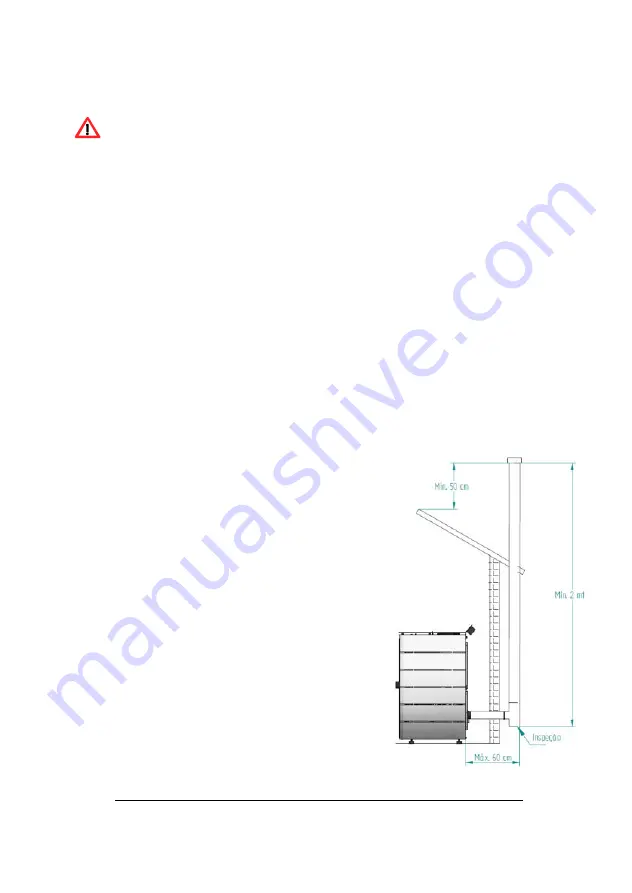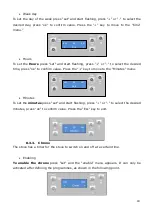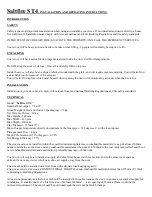
10
5.2.
Installation of ducts and smoke exhaust systems:
The construction of the gas exhaust pipe must be suitable for this purpose in
accordance with the local requirements and the applicable regulations.
Important! An inspection T- with a hermetic cap should be inserted at the exit
of the stove tailpipe to allow regular inspection or discharge of heavy dust and
condensate.
As shown in Figure 6, the exhaust duct shall be carried out in such a way that
cleaning and maintenance is ensured by inserting the inspection points.
- In operating conditions at rated power, it must be ensured that the draught of the
combustion gases must cause a depression of 12 Pa, measured 1 meter above the
smoke outlet.
The stove can't share the chimney with other equipment.
The pipes outside the place of use must be double insulated in stainless steel, with
an internal diameter of 80 mm.
The smoke exhaust pipe can generate condensation, in which case it is advisable to
establish suitable condensate collection systems.
5.3.
Installation without chimney
The installation of the pellet stove when there is no
chimney should occur, as in figure 6, bringing the
smoke exhaust pipe (with minimum internal
diameter of 80 mm) directly out and above the
roof.
Insulated double-walled stainless steel pipes
should be used properly anchored to prevent
condensation phenomena.
Provide a T at the base of the pipework for periodic
inspections
and
annual
maintenance,
as
exemplified in figure 5.
.
Figure 5 – Side view of the installation without chimney, with example of the inspection point
Summary of Contents for K50
Page 44: ...43 ...
Page 45: ...44 ...
Page 46: ...45 ...
Page 59: ...58 20 2 Fluxograme Ignition ...
Page 60: ...59 ...












































